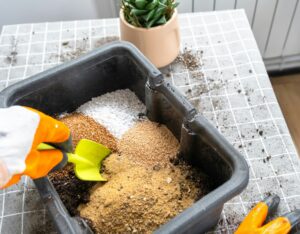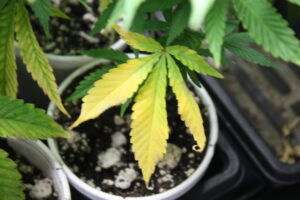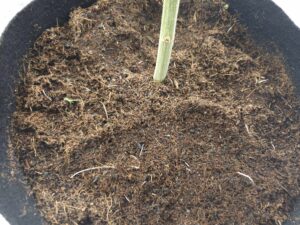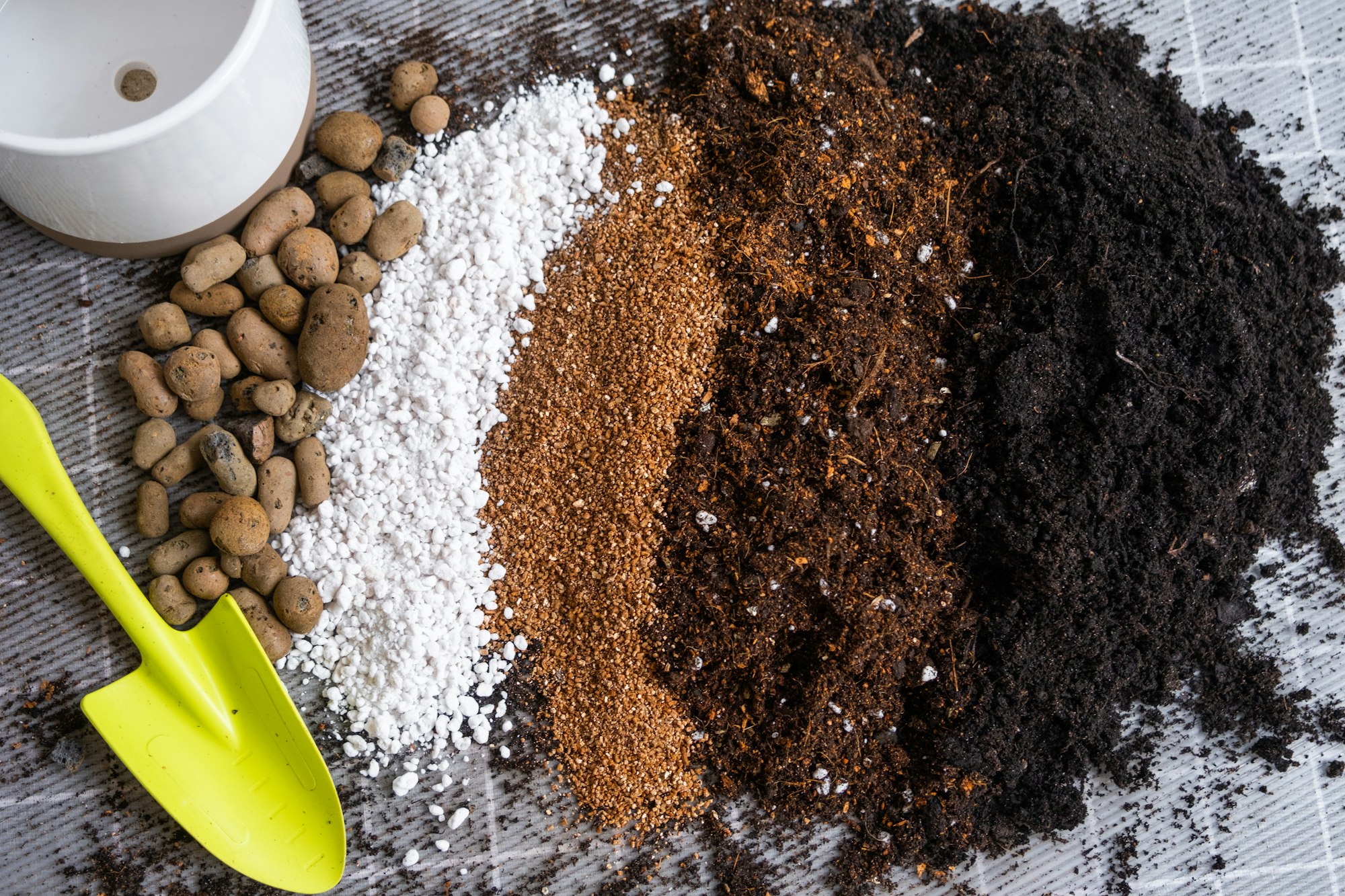
Choosing the right growing medium is a fundamental decision in cannabis cultivation, impacting everything from root health to nutrient absorption and overall plant quality. This guide explores various growing mediums, from traditional soil to innovative hydroponics, highlighting the benefits and challenges of each.
Whether you’re a seasoned grower or a newcomer, understanding the characteristics of mediums like soil, coco coir, and hydroponics is crucial. Soil offers a forgiving, nutrient-rich environment, ideal for beginners. Coco coir is sustainable and retains water well, while hydroponics promises rapid growth and high yields. Each option, including alternatives like Rockwool and perlite, presents unique advantages and considerations.
Our goal is to provide clear, engaging insights into these mediums, helping you make informed choices for successful cannabis cultivation. Join us as we navigate this diverse landscape, equipping you with the knowledge to enhance your growing experience and achieve a bountiful harvest.
Table of Contents
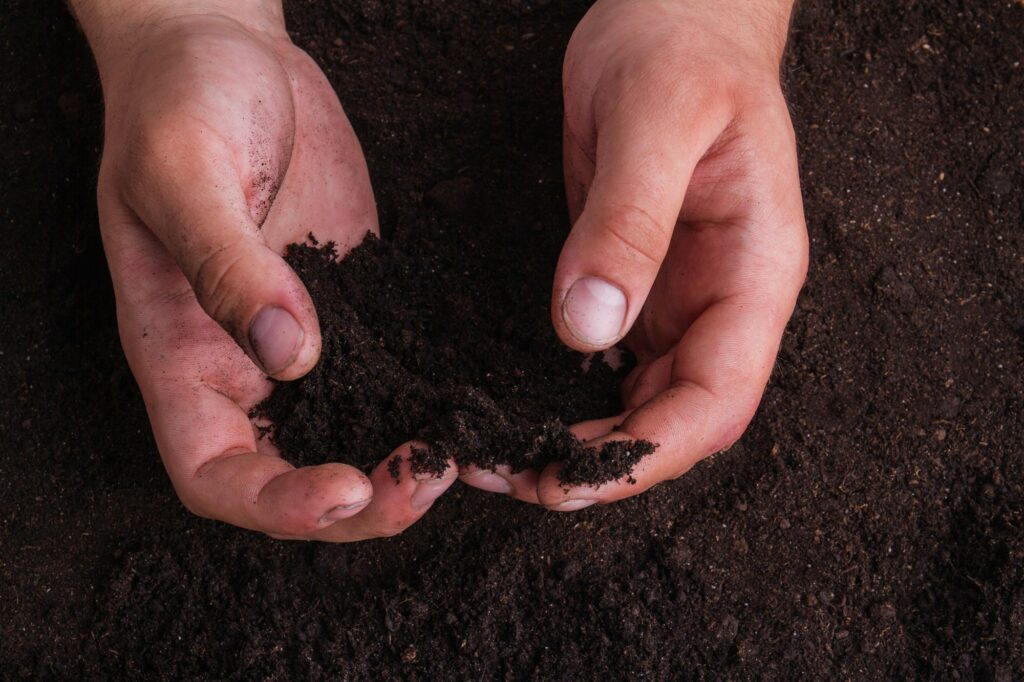
Soil: The Go-To of Cannabis Cultivation
Soil stands as the most traditional and natural medium for plant cultivation, embodying centuries of agricultural wisdom and practice. In the realm of cannabis cultivation, soil is not just a medium; it’s a living ecosystem that nurtures and sustains the plant from seedling to harvest. Its rich organic matter, teeming with microorganisms, not only supports robust plant growth but also plays a critical role in the nutrient cycle, contributing to the unique terpene profiles and potency of cannabis.
The Composition of Soil
Soil’s complexity lies in its composition, which can vary dramatically from one location to another. At its core, soil consists of minerals, organic matter, water, and air. However, for cannabis cultivation, the focus shifts towards specially formulated mixes designed to optimize growth. These mixes range from light and fluffy to dense and nutrient-rich, each tailored to different stages of the plant’s lifecycle or specific cultivation strategies.
Benefits of Using Soil
- User-Friendly: Ideal for beginners, soil offers a forgiving medium that compensates for common cultivation errors, such as over or under-watering, and nutrient imbalances.
- Nutrient-Rich: High-quality soil is laden with essential nutrients, reducing the need for early fertilization and easing the plant into its growth cycles.
- pH Buffering: Soil naturally buffers pH levels, providing a stable environment that protects plants from drastic fluctuations in nutrient availability.
Considerations for Soil Cultivators
- Quality and Composition: The variability in soil composition necessitates careful selection. Cannabis-specific potting mixes, sterilized to be free of pests and pathogens, are recommended over garden-variety soils.
- Drainage and Aeration: While soil inherently supports root development, poorly drained or compacted soils can hinder growth. Amendments like perlite or vermiculite are often incorporated to enhance these properties.
- Environmental Impact: The choice of soil can also have environmental implications. Peat moss, a common soil amendment, has raised sustainability concerns, prompting a shift towards more eco-friendly alternatives.
Tailoring Soil to Cannabis Needs
Optimal soil use in cannabis cultivation requires understanding the plant’s needs at different growth stages. Young plants thrive in lighter, well-aerated soils, while flowering plants benefit from denser, nutrient-rich mixes. Enhancing soil with amendments like compost, worm castings, and bone meal can boost its nutritional value and water retention, promoting healthier plant growth.
Soil remains a fundamental medium in cannabis cultivation due to its versatility and numerous benefits. Whether you’re a beginner or an experienced grower, mastering soil management can significantly improve your cultivation outcomes.
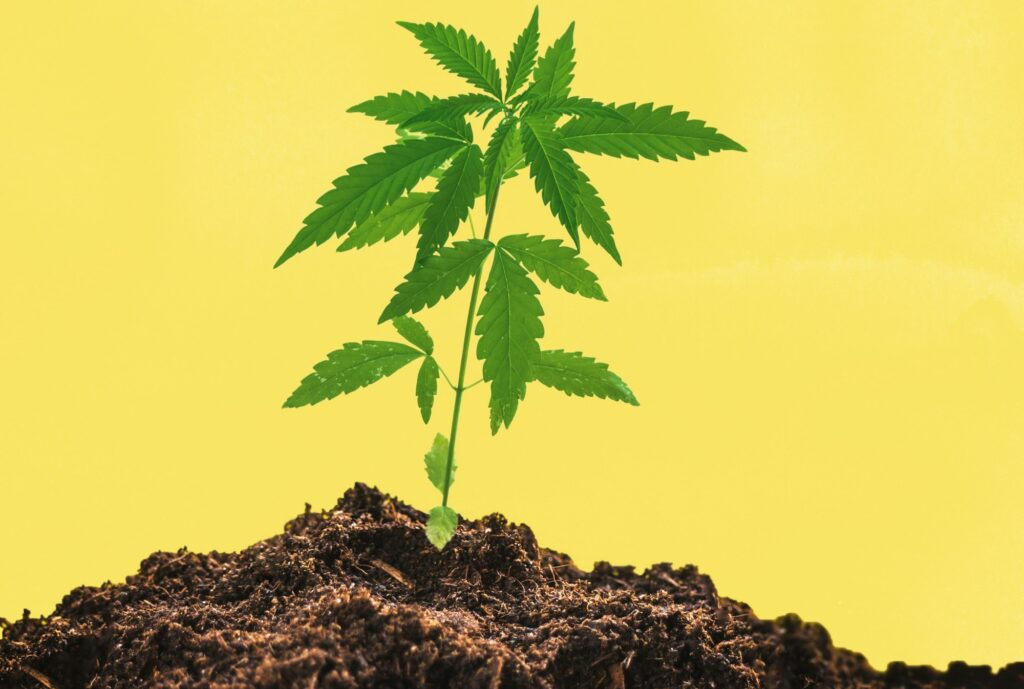
Coco Coir: The Versatile Medium for Cannabis Cultivation
Coco coir, a byproduct of the coconut industry, has risen to prominence as a highly sustainable and efficient growing medium for cannabis cultivation. Extracted from the fibrous husks of coconut shells, coco coir presents a versatile and environmentally friendly alternative to traditional soil, offering a unique blend of benefits for growers seeking to optimize their cultivation practices.
Understanding Coco Coir
Coco coir’s utility in cannabis cultivation stems from its remarkable physical and chemical properties. It retains water exceptionally well while also facilitating excellent aeration and drainage. This balance provides an ideal environment for root development, encouraging vigorous plant growth. Unlike soil, which can vary widely in quality and composition, coco coir offers consistency and control, enabling cultivators to tailor the nutrient regimen to the specific needs of the cannabis plant.
Benefits of Using Coco Coir
- Water Retention and Drainage: Coco coir’s fibrous nature allows it to hold water efficiently without becoming waterlogged, ensuring that roots receive adequate moisture while also accessing the air they need for health and growth.
- Eco-Friendly: As a renewable resource that utilizes a byproduct of the coconut industry, coco coir is a sustainable choice for environmentally conscious growers.
- Root Development: The structure of coco coir promotes strong and healthy root systems, which is crucial for nutrient uptake and the overall vitality of the cannabis plant.
- pH Neutral: Coco coir is naturally pH-neutral, providing a stable environment that can reduce the need for frequent pH adjustments.
Considerations When Using Coco Coir
- Nutrient Requirements: Being an inert medium, coco coir does not contain any nutrients. This requires growers to adopt a hydroponic feeding approach, delivering a balanced nutrient solution directly to the roots.
- Buffering: Some coco coir products are pre-buffered to remove sodium and potassium, which can compete with the plant’s uptake of magnesium and calcium. It’s important to select high-quality, buffered coco coir or to prepare it properly before use.
- Reuse and Sustainability: Coco coir can be reused for multiple growing cycles after proper cleaning and buffering. This aspect not only reduces waste but also enhances its appeal as a sustainable growing medium.
Integrating Coco Coir into Cannabis Cultivation
Transitioning to coco coir requires adjusting water and nutrient management, but the benefits include faster growth, higher yields, and better control over the growing environment. Its versatility makes it suitable for various setups, from small home gardens to large commercial operations.
Using coco coir not only enhances cultivation outcomes but also supports sustainable and eco-friendly practices. As the cannabis industry grows, adopting innovative and sustainable methods like coco coir will be key in shaping its future.
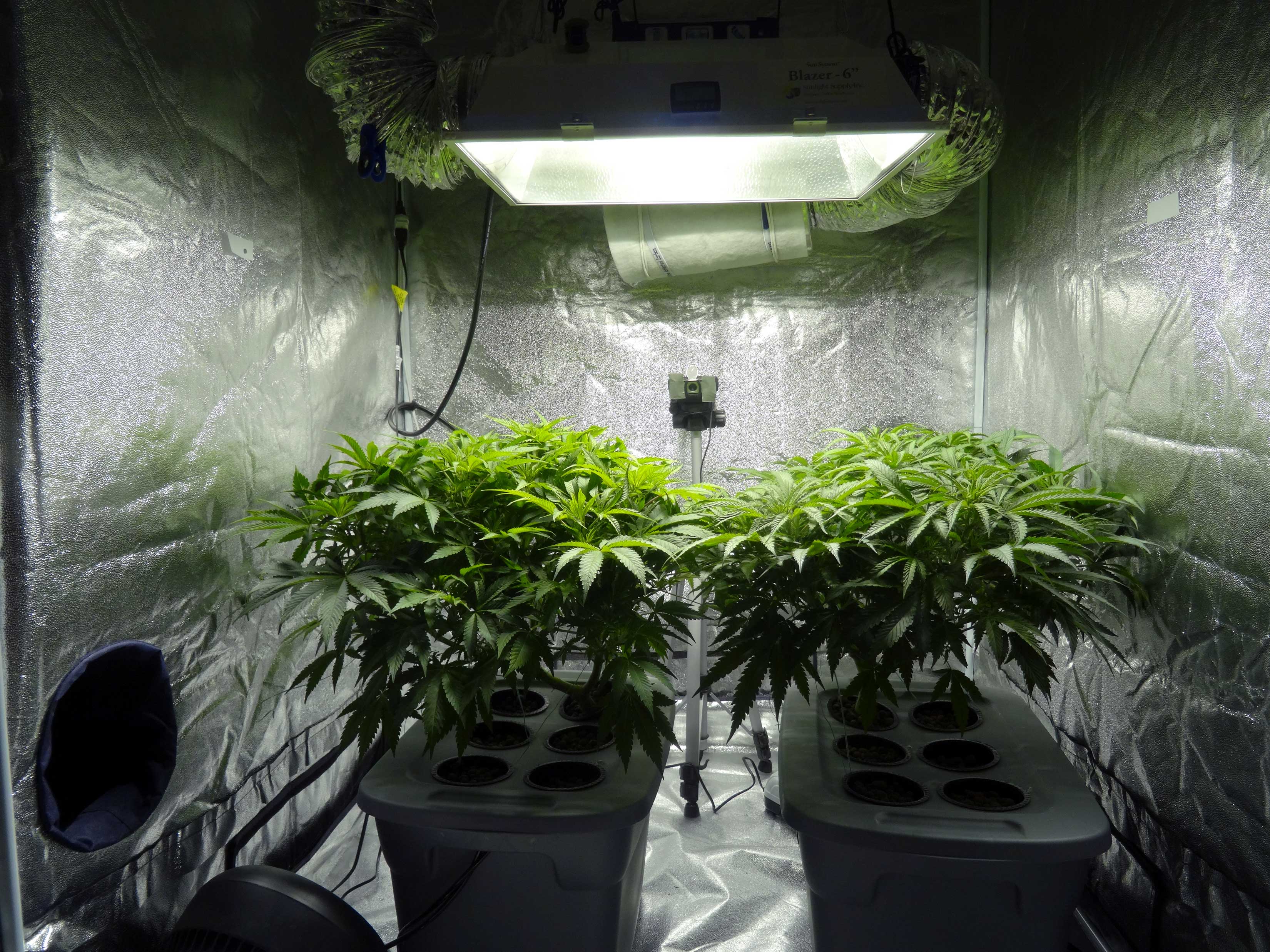
Hydroponics: Revolutionizing Cannabis Cultivation
Hydroponics represents a cutting-edge approach to cannabis cultivation, transcending traditional soil-based methods by submerging the roots directly in a nutrient-rich water solution. This innovative cultivation technique not only maximizes efficiency and yield but also offers unprecedented control over the plant’s growing environment, making it a favorite among both commercial growers and hobbyists alike.
The Essence of Hydroponic Systems
At its core, hydroponics eliminates the need for soil, replacing it with a water solution that is meticulously balanced with all the essential nutrients required for optimal plant growth. This direct delivery system ensures that the roots have immediate access to nutrients, facilitating faster growth and often resulting in higher yields compared to soil-grown plants. Hydroponic systems vary in complexity, from simple hand-watered buckets to fully automated drip or recirculating systems, each designed to suit different scales of operation and grower preferences.
Benefits of Hydroponic Cannabis Cultivation
- Accelerated Growth and Higher Yields: With direct nutrient uptake, cannabis plants in hydroponic systems typically grow faster and produce more bountiful harvests.
- Water Efficiency: Hydroponics uses water more efficiently than soil-based cultivation, making it an environmentally friendly option, particularly in areas where water is scarce.
- Control Over the Growing Environment: Hydroponics allows for precise control of nutrient concentration, pH levels, and other environmental factors, reducing the risk of soil-borne diseases and pests.
- Space Optimization: Hydroponic systems can be designed to maximize space, enabling vertical farming and other innovative configurations that are not possible with traditional soil gardens.
Considerations and Challenges
- Setup Cost and Complexity: The initial setup for a hydroponic system can be costly and complex, especially for automated or large-scale operations. It requires a certain level of technical knowledge and ongoing maintenance to ensure optimal functioning.
- Vigilant Monitoring: Hydroponic systems necessitate careful monitoring and adjustment of nutrient solutions, pH levels, and system components to prevent issues such as nutrient imbalances or equipment failures.
- Energy Dependence: Most hydroponic systems rely on electricity to power pumps, lights, and other equipment, which could lead to vulnerabilities in the event of power outages.
Embracing Hydroponics in Cannabis Cultivation
Transitioning to hydroponics represents a significant shift in cultivation methodology, promising numerous benefits but also requiring a dedicated approach to management and care. For those willing to navigate its complexities, hydroponics offers a pathway to achieving greater yields, faster growth, and a more sustainable cultivation practice. As the cannabis industry continues to evolve, hydroponic cultivation stands at the forefront of innovation, pushing the boundaries of what is possible in cannabis growth.
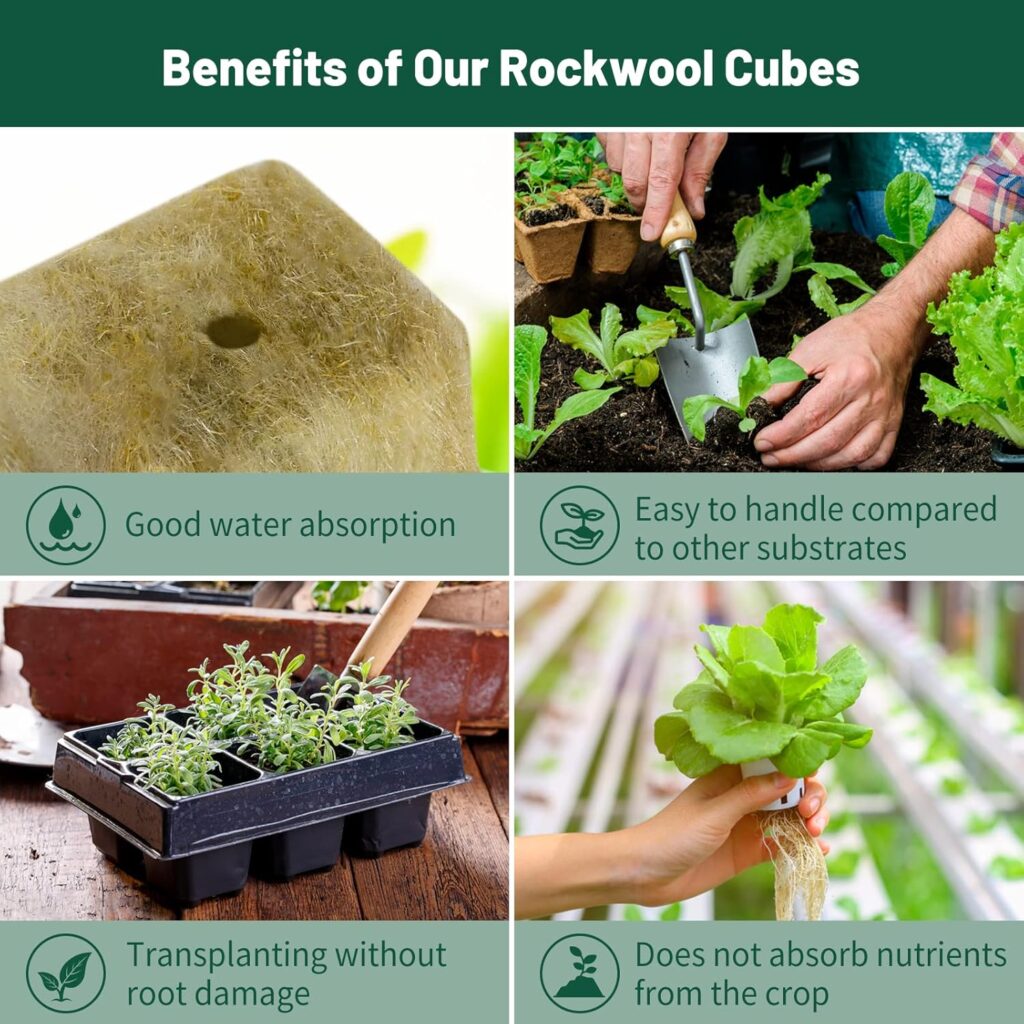
Rockwool: A High-Efficiency Medium for Cannabis Cultivation
Rockwool, a staple in hydroponic systems, has emerged as a popular choice among cannabis cultivators for its unique properties and versatility. Made from molten rock spun into fine fibers, Rockwool offers an inert, sterile growing environment that can significantly enhance the efficiency of cannabis cultivation.
What is Rockwool?
Rockwool is produced by melting basaltic rock and chalk, which is then spun into fibrous cubes, blocks, or slabs. This process creates a medium that is both lightweight and capable of holding water and air simultaneously. Its structure is ideal for seed starting, cloning, and supporting plant growth in various hydroponic setups.
Benefits of Using Rockwool
- Sterility: Being sterile, Rockwool is free from seeds, pests, and pathogens, offering a clean start for cannabis plants.
- Water Retention and Aeration: Rockwool holds water efficiently while still allowing plenty of oxygen to reach the roots, creating an optimal balance for cannabis root health and growth.
- pH and EC Control: Rockwool allows for precise control over the pH and electrical conductivity (EC) levels, enabling growers to tailor the nutrient solution directly to the plant’s needs.
- Versatility: Suitable for a variety of hydroponic systems, Rockwool can be used at all stages of plant growth, from germination to flowering.
Considerations When Using Rockwool
- pH Adjustment: New Rockwool tends to have a high pH that needs to be adjusted down to suit cannabis cultivation. Pre-soaking in pH-adjusted water is a necessary step before use.
- Environmental Impact: While highly effective, Rockwoil’s non-biodegradable nature poses disposal challenges, making it less environmentally friendly than other mediums.
- Handling Precautions: The fibrous material can irritate skin and respiratory systems, so wearing protective gear during handling is recommended.
Integrating Rockwool into Cannabis Cultivation
Incorporating Rockwool into your cannabis cultivation requires attention to detail, especially regarding water and nutrient management. Due to its efficient water retention, overwatering can become a risk, necessitating careful monitoring of moisture levels and root health. For those ready to embrace its precision and control, Rockwool can unlock new levels of productivity and efficiency in cannabis cultivation.
Moving Forward with Rockwool
As cannabis cultivators seek out innovative and effective ways to optimize their grows, Rockwool presents a compelling option. Its combination of sterility, control, and efficiency makes it a powerful tool in the hydroponic cultivator’s arsenal. However, its environmental footprint reminds us of the importance of considering sustainability in our cultivation choices. As the industry evolves, finding ways to mitigate these impacts will be key to the responsible use of Rockwool and similar mediums.
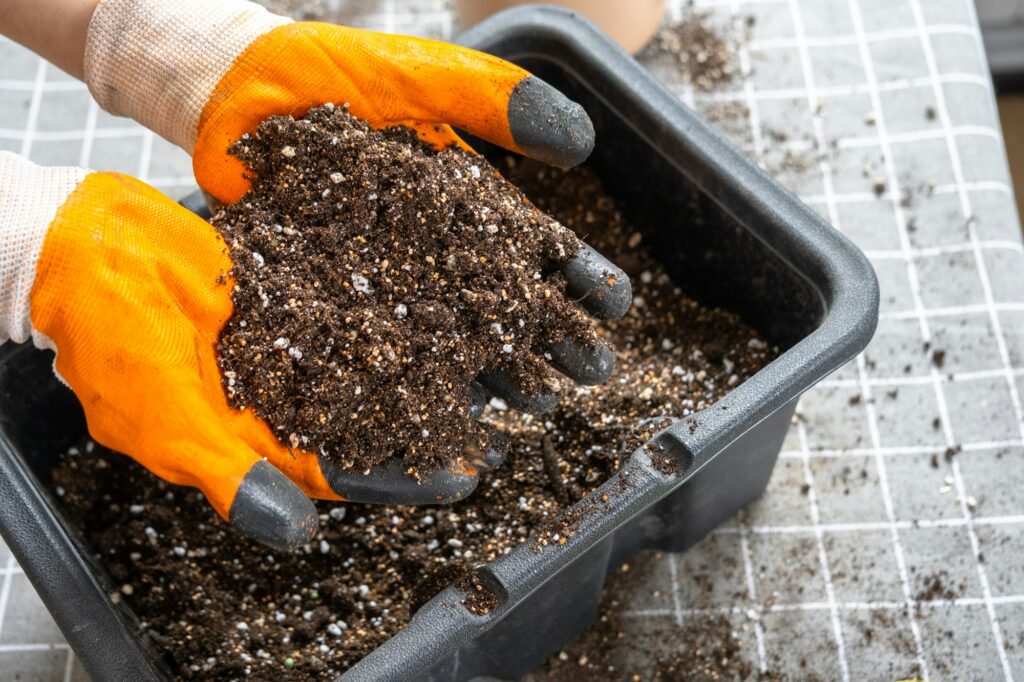
Environmental Sustainability of Using Perlite and Vermiculite
Perlite and vermiculite, while beneficial for cannabis cultivation, raise questions regarding their environmental sustainability. Understanding the ecological footprint of these soil amendments is crucial for cultivators who prioritize environmental responsibility alongside plant health and yield.
Perlite: A Closer Look at Its Environmental Impact
- Extraction and Production: Perlite is a volcanic glass mined from the earth. The extraction process, similar to mining, can disturb natural habitats and landscapes. However, perlite deposits are often abundant, and the mining impact is somewhat mitigated by perlite’s widespread availability and the efficiency of the expansion process, which requires minimal chemical treatment.
- Energy Use: The expansion process, where perlite is heated to high temperatures, consumes significant energy, contributing to its environmental footprint. Efforts to use renewable energy sources in this process can help reduce the overall impact.
- Durability and Reuse: Perlite’s durability means it doesn’t break down easily, allowing for reuse in multiple growing cycles. This reusability can lessen the demand for new perlite and reduce waste, contributing to a more sustainable cultivation practice.
Vermiculite: Environmental Considerations
- Extraction and Processing: Vermiculite is also mined, which can have similar environmental impacts as perlite extraction, including habitat disruption and landscape alteration. The processing of vermiculite is energy-intensive, further adding to its ecological footprint.
- Asbestos Contamination Concerns: Historically, some vermiculite sources were found to be contaminated with asbestos. While modern sources are monitored for safety, the legacy of asbestos contamination has raised health and environmental concerns.
- Biodegradability: Unlike perlite, vermiculite can break down over time, especially in very moist conditions. While this means it might not be as reusable as perlite, its degradation contributes less to long-term waste.
Towards More Sustainable Practices
- Responsible Sourcing: Choosing perlite and vermiculite from suppliers who prioritize environmental responsibility in their extraction and production processes can help mitigate negative impacts.
- Recycling and Reuse: Encouraging the recycling or repurposing of perlite and vermiculite can significantly reduce the environmental footprint. Cleaned and sterilized perlite and vermiculite can be reused in new growing cycles or applied to other gardening projects.
- Alternatives Exploration: For those concerned with the sustainability of perlite and vermiculite, exploring alternative amendments with lower environmental impacts, such as rice hulls or biochar, might be worthwhile. These alternatives can offer similar benefits in soil aeration and moisture retention without the heavier ecological footprint.
In conclusion, while perlite and vermiculite are invaluable resources in cannabis cultivation for improving soil structure, aeration, and moisture retention, their environmental sustainability is nuanced. Cultivators can make more ecologically responsible choices by considering the source, energy use, and reuse potential of these amendments, alongside exploring sustainable alternatives.
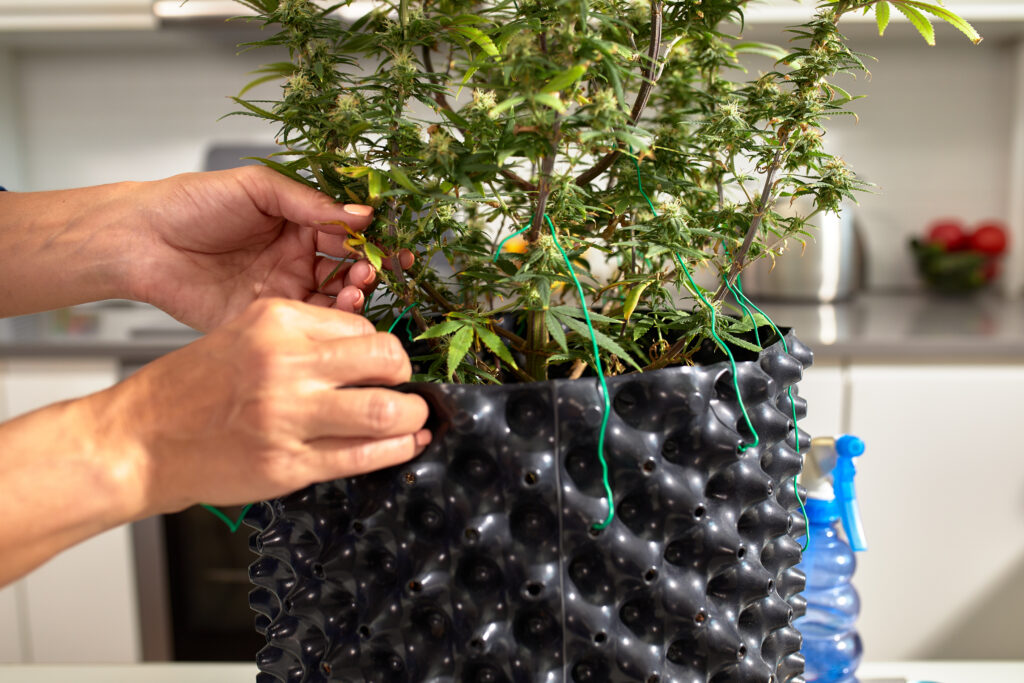
Air Pots and Smart Pots: Revolutionizing Root Health in Cannabis Cultivation
In the quest for optimizing cannabis cultivation, the focus often lands on the medium in which plants grow. However, the containers holding this medium can dramatically influence plant health and yield. Air pots and smart pots, innovative alternatives to traditional containers, have garnered attention for their unique ability to enhance root development and plant growth.
Air Pots: The Root-Pruning Powerhouses
Air pots are designed with a series of openings along the sides, allowing air to penetrate the soil and directly reach the roots. This design facilitates “air pruning,” a natural process where exposed root tips dehydrate and signal the plant to produce new, healthy root branches. This continuous cycle of growth results in a dense, fibrous root system capable of absorbing more nutrients and water.
- Benefits for Cannabis Cultivation:
- Enhanced Root Development: Air pruning encourages the growth of a more extensive root system, leading to stronger, healthier plants.
- Improved Oxygenation: The increased airflow to the root zone boosts oxygen levels, vital for root respiration and overall plant health.
- Reduced Root Circling: Traditional pots often cause roots to circle and strangle themselves, but air pots eliminate this issue, preventing root-bound plants.
- Considerations:
- Watering Frequency: The enhanced aeration means soil in air pots can dry out faster, potentially requiring more frequent watering.
- Temperature Sensitivity: Roots exposed to air through the openings might be more sensitive to temperature fluctuations.
Smart Pots: The Fabric Container Revolution
Smart pots are made from breathable fabric, allowing water and air to pass through the sides of the pot. This not only prevents overwatering by improving drainage but also facilitates air pruning much like air pots. The fabric’s permeability ensures a cooler root environment, which can be particularly beneficial in warmer climates.
- Benefits for Cannabis Cultivation:
- Healthy Root System: Like air pots, smart pots encourage a denser and more fibrous root structure through air pruning.
- Improved Drainage: The fabric’s permeability prevents waterlogging, protecting against root rot and other moisture-related issues.
- Temperature Regulation: The breathable fabric helps to keep the root zone at an optimal temperature, promoting vigorous plant growth.
- Considerations:
- Durability: While highly durable, smart pots may have a shorter lifespan than hard plastic containers, especially when exposed to the elements for extended periods.
- Watering Adjustments: As with air pots, the increased drainage may require adjustments to watering schedules to ensure plants receive adequate moisture.
Choosing Between Air Pots and Smart Pots
Both air pots and smart pots offer distinct benefits over traditional containers by promoting healthier root systems. The choice between them often depends on specific cultivation needs and preferences. Air pots provide a rigid structure, making them stable and easy to move, while smart pots offer better temperature control and portability.
Using these innovative containers can enhance plant health, yield, and growth. They reflect a shift toward more efficient cultivation practices, emphasizing the importance of root health. Whether you’re using soil or other growing mediums, selecting the right container can significantly impact the overall quality of your cannabis cultivation experience.
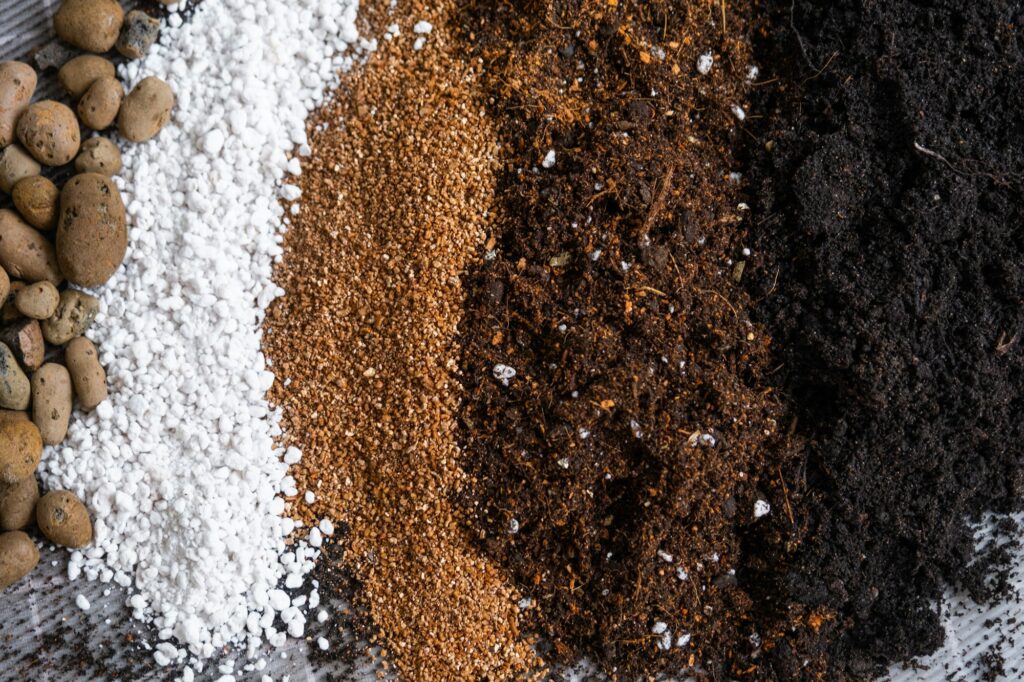
Conclusion: Crafting the Ideal Environment for Cannabis Cultivation
The Role of Growing Mediums and Containers
- Soil: As the most traditional medium, soil is celebrated for its user-friendly nature and the rich, organic environment it offers. Its buffering capabilities for pH and nutrients make it an excellent choice for beginners and those looking for a more natural approach to cultivation.
- Coco Coir: With its remarkable water retention and aeration properties, coco coir stands out as a sustainable, pH-neutral medium that encourages strong root development and faster growth, particularly suited to both hydroponic and soil setups.
- Hydroponics: This method revolutionizes cultivation with soilless systems that deliver nutrients directly to the roots in a highly absorbable form, offering precise control over the growing environment and the potential for significantly increased yields.
- Rockwool: Known for its excellent water retention and aeration, Rockwool provides a sterile, inert medium perfect for seed starting and cloning, though it requires careful management of its naturally alkaline pH.
- Perlite and Vermiculite: These amendments improve soil structure by enhancing drainage and moisture retention, respectively. Their use in soil mixes allows for customized aeration and water-holding properties to suit different stages of plant growth.
- Air Pots and Smart Pots: These innovative containers optimize root health through improved aeration and by preventing root circling. The result is healthier, more vigorous plant growth and, potentially, higher yields.
Unifying Principles for Optimal Growth
The diversity among these mediums and containers underscores a unifying principle in cannabis cultivation: the importance of tailoring the growing environment to the specific needs of the plant at various stages of its lifecycle. Understanding the characteristics and best uses of each medium and container type enables cultivators to make informed decisions that enhance the health and productivity of their cannabis plants.
Learning More About Growing Mediums
As the cannabis industry continues to evolve, so too will the technologies and methodologies around cultivation. Innovations in medium and container design, coupled with a growing emphasis on sustainability and efficiency, promise to open new avenues for cultivators to explore. The ongoing exploration of these growing mediums and containers reflects the dynamic nature of cannabis cultivation, a field where tradition meets innovation, and where continuous learning and adaptation are key to success.
Choosing the right growing medium is foundational for successful cannabis cultivation. The medium you select impacts root development, nutrient availability, and overall plant health. Whether you’re using soil, coco coir, hydroponics, or another medium, understanding the benefits and challenges of each can help you create the optimal growing environment for your cannabis plants.
To further expand your knowledge and explore more advanced mediums, don’t miss our follow-up article on Cannabis Growing Mediums Part 2. This article delves deeper into alternative mediums and their specific applications, helping you make informed decisions that suit your growing style and goals.
Additional Resources:
- Grow That Sh!t Better by Maximus Reigns – An essential eBook for both novice and experienced growers, offering advanced techniques and tips for improving cannabis cultivation.
- Cannabis Growers’ Handbook by Ed Rosenthal – A comprehensive guide that covers all aspects of growing cannabis, from setup to harvest.
- Royal Queen Seeds Blog – A rich resource for growers, featuring articles on growing techniques, strain information, and more.
- Need Cannabis Seeds? – Seedsman Seeds has a variety of seeds for all growers from new and seasoned to medical and CBD users.
- Grow Weed Easy – A website dedicated to providing step-by-step guides and resources for growing cannabis at home.
These resources will equip you with the knowledge and tools needed to choose the perfect growing medium for your cannabis plants. By mastering the use of different mediums, you can tailor your growing environment to enhance plant health and maximize yields. Happy growing!
